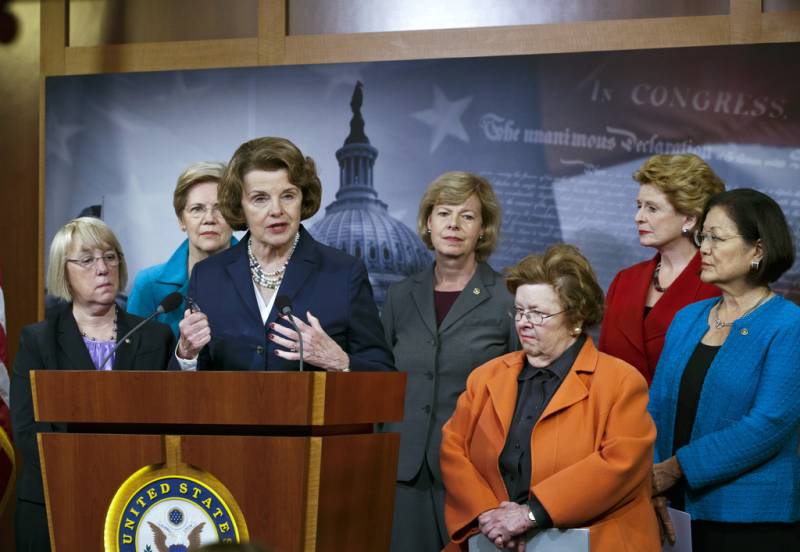The race to replace her in the fall 2024 election is already underway, with a primary scheduled for March. Reps. Katie Porter (Irvine) , Adam Schiff (Burbank), and Barbara Lee (Oakland) are among the top Democrats vying for the seat.
In the meantime, Newsom is expected to select a Democrat to fill the seat.
How long will her seat be vacant?
It’s not immediately clear how quickly Newsom will move to pick a replacement. No timeline is set forth in state law.
When then-Sen. Kamala Harris left her seat after being elected vice president in 2020, it went vacant for about two weeks until Newsom appointed then-Secretary of State Alex Padilla.
Who will replace Feinstein?
Harris’ departure from the Senate left Black women without any representation in the chamber. Newsom was under dual pressures to name either a Black woman or a Latino person to replace her, and he chose Padilla, who became California’s first Latino U.S. senator. After that, Newsom said that if Feinstein’s seat became vacant, he’d appoint a Black woman.
Newsom, who is seen as a potential 2028 Democratic presidential candidate, will face pressure to make good on his promise. He has already said he does not plan to select one of the Democratic candidates currently running for Feinstein’s seat, including Lee, who is a Black woman.
Newsom may choose merely a caretaker to hold the seat as a short-term replacement until someone is elected in November 2024.
San Francisco Mayor London Breed, who is Black, shied away from directly answering a question Friday about whether she would consider serving as a replacement if Newsom chose her.
Newsom could also appoint himself, though that is seen as unlikely.
Is there any impact on the looming government shutdown?
The biggest issue Congress is currently facing is the near-certain shutdown. Unlike in the bitterly divided House of Representatives, there has so far been overwhelming bipartisan support for Senate spending bills so far.
Still, if Newsom doesn’t appoint a replacement quickly, Senate Democrats could have a more difficult time winning enough votes as they try to keep the government open over the weekend.
It’s unlikely that Senate Minority Leader Mitch McConnell and his Republican caucus in the Senate will suddenly side with House Republicans pushing for a shutdown, but if that were to happen, it could make it tougher for Democrats, with their razor-thin majority, to bring in the votes they need to stave off a shutdown.
Associated Press writer Mary Clare Jalonick in Washington contributed to this report.








